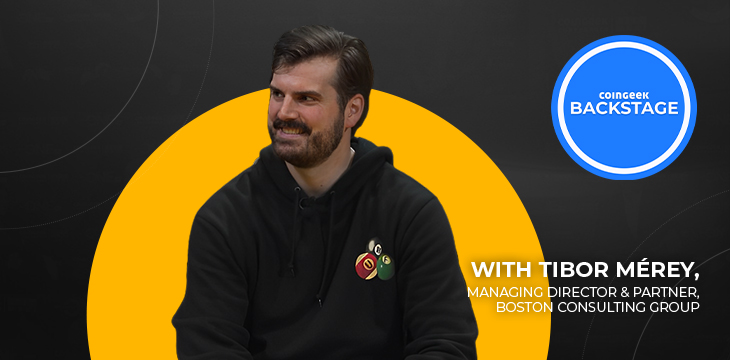|
Getting your Trinity Audio player ready...
|
At the London Blockchain Conference this year, Tibor Mérey delivered a keynote address on enterprise blockchain adoption. CoinGeek Backstage caught up with him on the sidelines of the conference to discuss blockchain’s progress within big businesses and governments.
Mérey is a managing director and partner at the Boston Consulting Group (BCG), the world’s second-largest management consultancy. At BCG, he leads the firm’s Web3, IoT, and extended reality divisions.
“For the longest time, blockchain has been pushed as a hammer looking for nails. Those times are over,” Mérey told CoinGeek Backstage’s Kurt Wuckert Jr.
Mérey believes that for blockchain to break through in the enterprise world, developers must focus solely on the challenges they seek to solve, not the sideshows.
Satoshi launched Bitcoin as peer-to-peer electronic cash to fix the broken model relying on a few intermediaries. Mérey believes that this vision is still alive today as the challenges that plagued the world in 2008 are still prevalent today.
However, blockchain has emerged as an even bigger opportunity, and enterprises are warming up to Web3, he told CoinGeek Backstage.
Mérey also delved into the debate on whether there will ultimately be one chain to rule them all. Today, thousands of chains exist, with most being ghost towns that process a handful of transactions.
“I don’t think there will be space for 5,000 blockchains,” Mérey says.
He believes that most of the chains without utility will either collapse or consolidate in the future. However, he warned against blockchain tribalism “and trying to pull each other down.”
“It’s really about convincing businesses around the true value you can unlock.”
Decentralization, misconceptions, and learning from Facebook
Blockchain is rife with misconceptions, some pushed by people who don’t know better and others by people with agendas. Many have impeded the adoption of technology, especially at the enterprise level.
As a management consultant, Mérey faces hundreds of top-level executives annually who believe these misconceptions and has embarked on a campaign to educate key decision-makers about blockchain.
He told CoinGeek Backstage that he has found the best approach is to avoid the sideshows and “go straight to where the value is.”
Working with governments and big enterprises, the issue of energy consumption often crops up. BTC’s sky-high energy consumption has led many to assume that proof-of-work as a consensus mechanism is fundamentally flawed, and Ethereum’s migration only cemented this misled belief.
However, BSV blockchain has proven that proof-of-work can be efficient. With its unlimited block sizes, it processed over a billion transactions last year. The upcoming Teranode upgrade will further enhance these capabilities, pushing the network to over a million transactions per second.
This year marked 20 years of Facebook (NASDAQ: META), and in those two decades, the social media revolution Mark Zuckerberg sparked has brought massive benefits to billions of people. However, it has also come at a cost, including the loss of privacy, rising depression, and addiction.
As blockchain embarks on the start of its journey towards becoming a household technology, are there lessons we can learn from previous tech cycles?
Mérey believes that one such lesson is that “going fast isn’t always the best way.” He also noted that in addition to technical concerns, users must pose philosophical questions about any new technology, starting with blockchain.
Watch: Teranode & the Web3 world with edge-to-edge electronic value system

 01-05-2026
01-05-2026 




